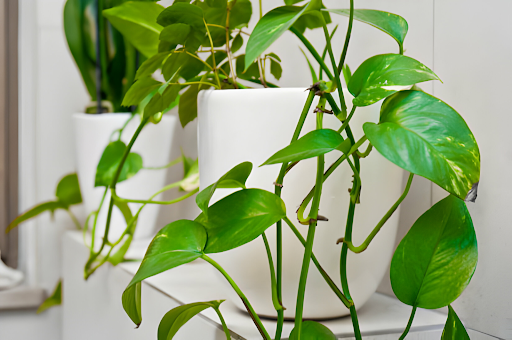Illuminate Your Space: DIY Lighting Fixtures and Tips for a Personalized Touch

Upgrade Your DIY Lighting Fixtures and Tips
Lighting plays a crucial role in enhancing the ambiance of any space. Whether it’s your home, office, or any other area, good lighting can make a significant difference in the overall look and feel. If you’re looking to upgrade your lighting and want to add a personal touch to your fixtures, this article will guide you through the process of creating your own DIY lighting fixtures. We’ll explore different ideas, step-by-step instructions, and valuable tips to help you achieve the perfect lighting for your space.
Importance of Good Lighting
Before diving into the world of DIY lighting fixtures, let’s understand why good lighting is essential. Lighting affects our mood, productivity, and even our health. Adequate lighting can make a small room appear more spacious, highlight architectural details, and create a warm and inviting atmosphere. On the other hand, poor lighting can make a room feel gloomy, strain our eyes, and hinder daily tasks. By upgrading your lighting, you can transform the look and functionality of any space.
Factors to Consider for Lighting Upgrades
When planning your lighting upgrades, it’s important to consider various factors to ensure the best results. Here are some key considerations:
Energy Efficiency: Opting for energy-efficient lighting solutions not only helps reduce your carbon footprint but also saves on electricity bills. LED bulbs are a popular choice due to their long lifespan and low energy consumption.
Design Aesthetics: Lighting fixtures can be an excellent way to enhance the overall design and style of your space. Consider the existing décor, architectural features, and personal preferences when selecting or designing lighting fixtures.
Functionality and Practicality: Lighting should serve a purpose and be practical for the specific area. Determine the tasks or activities that will take place in the space and choose lighting options that cater to those needs.
DIY Lighting Fixtures
Creating your own DIY lighting fixtures adds a personal touch to your space and allows you to unleash your creativity. Here are a few inspiring ideas for DIY lighting fixtures:
Mason Jar Chandeliers
Mason jar chandeliers are a trendy and versatile option for adding a rustic charm to any room. You can suspend multiple mason jars from a ceiling-mounted fixture and use them as pendant lights. Fill the jars with fairy lights, candles, or even small plants to create a unique and cozy atmosphere.
Rope Pendant Lights
Rope pendant lights provide a unique and natural element to your lighting design. By wrapping a rope around a simple pendant light cord, you can create a visually appealing fixture that complements various interior styles, from nautical to industrial.
Wine Bottle Sconces
If you’re a wine enthusiast, repurposing empty wine bottles into sconces can be a great way to add character to your walls. Cut the bottom of the bottle, attach it to the wall with a metal bracket, and insert a candle or a battery-operated LED light into the bottle. These wine bottle sconces create a soft and intimate glow, perfect for creating a cozy ambiance.
Geometric Paper Lamps
For those who love geometric patterns and a touch of modernity, geometric paper lamps are a fantastic DIY lighting option. By folding and assembling paper in various geometric shapes, you can create striking lampshades that cast mesmerizing patterns on the walls when illuminated.
Step-by-Step Guide to DIY Lighting Fixtures
Now that you have some inspiring ideas for DIY lighting fixtures, let’s dive into a step-by-step guide to help you bring your creations to life.
Materials and Tools Required:
Before you start, gather the necessary materials and tools. Depending on the specific DIY lighting project, you may need items such as mason jars, ropes, wine bottles, paper, scissors, glue, light bulbs, electrical wires, and connectors.
Preparing the Workspace:
Ensure you have a clean and well-lit workspace. Lay out all the materials and tools you’ll need for the project. Having a clutter-free and organized workspace will make the process smoother and more enjoyable.
Assembly Instructions:
Follow the assembly instructions specific to each DIY lighting fixture. For example, if you’re creating mason jar chandeliers, you’ll need to attach the ceiling-mounted fixture, secure the jars, and connect the electrical wiring according to safety guidelines. Each project will have its own unique set of instructions, so pay attention to details and follow the steps carefully.
Wiring and Electrical Considerations:
When working with electrical components, safety is paramount. Ensure that you have a basic understanding of electrical wiring or seek assistance from a professional if needed. Follow electrical codes and guidelines to ensure the safety of your DIY lighting fixtures. If you’re unsure about any electrical aspect, it’s best to consult an expert.
Tips for Successful Lighting Upgrades
While creating your DIY lighting fixtures, consider these tips to maximize the impact of your lighting upgrades:
Assessing Your Needs:
Before making any lighting decisions, assess the specific needs of the space. Determine the purpose of the lighting, whether it’s for task lighting, ambient lighting, or accent lighting. This will help you choose the right fixtures and light sources to fulfill those needs.
Choosing the Right Bulbs:
Selecting the right bulbs is crucial for achieving the desired lighting effects. Consider factors such as color temperature, brightness level, and energy efficiency when choosing light bulbs. LED bulbs are a popular choice for their longevity, energy efficiency, and versatility.
Layering Light Sources:
To create depth and ambiance in your space, utilize different layers of light. Combine overhead fixtures, task lighting, and accent lights to create a balanced and visually appealing lighting scheme.
Incorporating Dimmers and Controls:
Installing dimmers and lighting controls allows you to adjust the intensity of light according to different occasions and moods. Dimmers provide flexibility and control over your lighting, enhancing the overall ambiance of the space.
Considering Natural Light:
Make the most of natural light by strategically placing mirrors and reflective surfaces to amplify the natural light in the room. Consider the direction and intensity of sunlight throughout the day to optimize your artificial lighting setup.
Safety Precautions
While engaging in any DIY project, it’s essential to prioritize safety. Here are a few safety precautions to keep in mind when working with DIY lighting fixtures:
- Always follow electrical safety guidelines and codes.
- Turn off the power supply before starting any electrical work.
- Use proper insulation and protection for electrical wires.
- Ensure fixtures are securely attached and won’t pose a risk of falling.
- If you’re unsure about any electrical aspect, consult a professional to ensure the safety of your DIY lighting fixtures.
Conclusion
Upgrading your lighting with DIY fixtures is a creative and fulfilling endeavor. By adding a personal touch to your lighting design, you can transform the ambiance of your space while showcasing your unique style. Remember to consider factors such as energy efficiency, design aesthetics, and functionality when planning your lighting upgrades. Follow the step-by-step guide for your chosen DIY lighting projects, and don’t forget to prioritize safety throughout the process. With the right tips and techniques, you’ll be able to upgrade your lighting and create a space that is visually appealing, functional, and tailored to your taste.
FAQs
Q1: Are DIY lighting fixtures difficult to make?
Creating DIY lighting fixtures can vary in difficulty depending on the specific project. Some projects may require basic electrical knowledge and tools, while others may be simpler and more beginner-friendly. It’s important to choose a project that matches your skill level and seek assistance if needed.
Q2: Can I use LED bulbs for all DIY lighting fixtures?
Yes, LED bulbs are a versatile and energy-efficient choice for most DIY lighting fixtures. They come in various shapes, sizes, and color temperatures to suit different design preferences and lighting needs.
Q3: Are DIY lighting fixtures safe to use?
When constructed and installed properly, DIY lighting fixtures can be safe to use. However, it’s crucial to follow electrical safety guidelines, use appropriate materials, and ensure secure installations. If you’re unsure about any electrical aspects, it’s recommended to consult a professional.
Q4: Can I customize DIY lighting fixtures to match my home decor?
Absolutely! That’s one of the advantages of DIY lighting fixtures. You have the freedom to choose materials, colors, and designs that align with your home decor style. Let your creativity shine and create fixtures that perfectly complement your space.
Q5: Where can I find inspiration for DIY lighting projects?
There are various sources of inspiration for DIY lighting projects. You can browse online platforms, such as Pinterest and home improvement websites, for ideas and tutorials. Additionally, home decor magazines and books can provide inspiration for unique and creative lighting designs.











